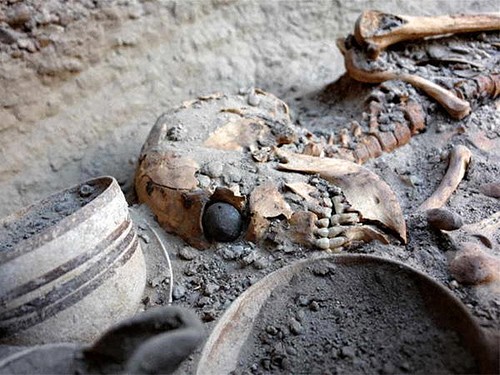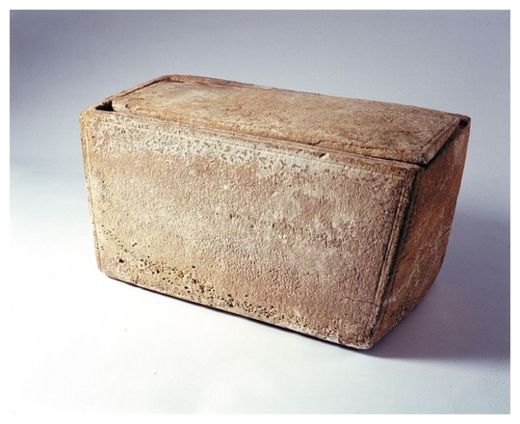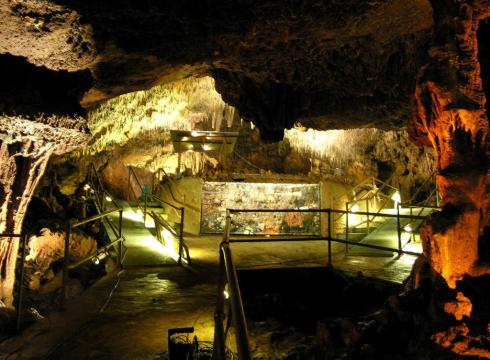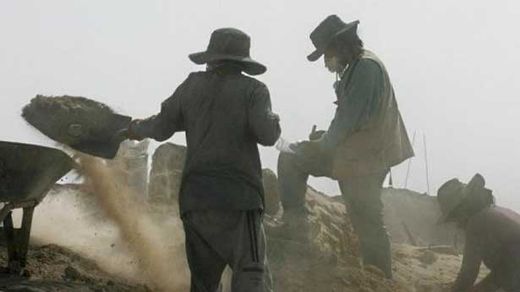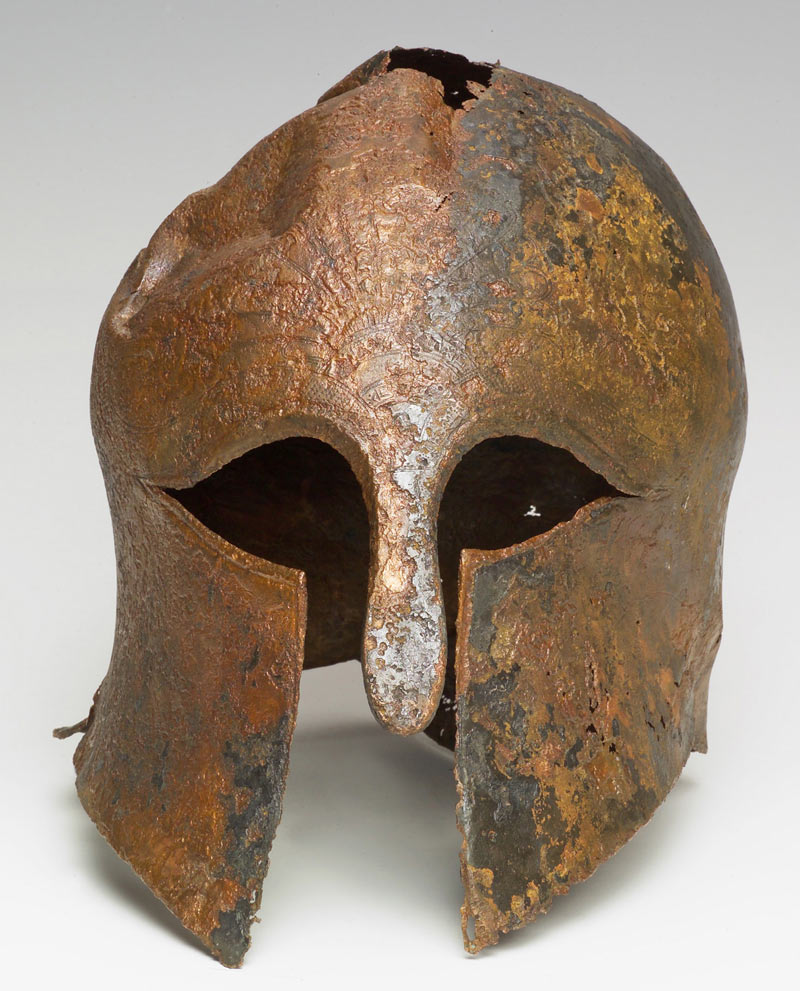
© Israel Antiquities AuthorityCovered with gold leaf (now somewhat corroded), this 2,600-year-old bronze helmet was discovered in the waters of Haifa Bay, in Israel. The helmet would have been worn by a wealthy Greek mercenary leader.
A Greek bronze helmet, covered with gold leaf and decorated with snakes, lions and a peacock's tail (or palmette), has been discovered in the waters of Haifa Bay in Israel. But how this helmet ended up at the bottom of the bay is a mystery.
The helmet dates back around 2,600 years and likely belonged to a wealthy Greek mercenary who took part in a series of wars, immortalized in the Bible, which ravaged the region at that time. Archaeologists believe that he likely fought for
an Egyptian pharaoh named Necho II.
Dredging discoveryThe helmet was discovered accidentally in 2007 during commercial dredging operations in the harbor. After it was discovered, conservators with the Israel Antiquities Authority went to work cleaning it and archaeologists began to analyze it.
They discovered that it is very similar to
another helmet found in the 1950s near the Italian island of Giglio, about 1,500 miles (2,300 kilometers) away. That helmet has been dated to around 2,600 years ago, something which helped the researchers arrive at a date for the Haifa Bay helmet.
"The gilding and figural ornaments make this one of the most ornate pieces of early Greek armor discovered," writes Jacob Sharvit, director of the Marine Archaeology Unit with the Israel Antiquities Authority, and John Hale, a professor at the University of Louisville, in a summary of their research being presented at the meeting.
This
Greek warrior likely would have been a very wealthy individual, as few soldiers could afford such an ornate helmet. The researchers aren't sure where the helmet was made, though they suspect the warrior could be from one of the Greek colonies in Ionia, on the west coast of modern-day Turkey.


